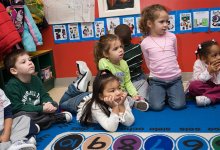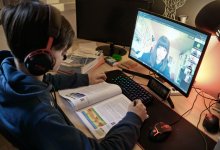Differentiated Instruction
Build lessons, develop teaching materials, and vary your approach so that all students, regardless of where they are starting from, can learn content effectively, according to their needs.
Using AI to Support Universal Design for Learning in Elementary School
These tech tools provide elementary teachers with ways to differentiate instruction, increasing student engagement and choice.8.9kYour content has been saved!
Go to My Saved Content.The Benefits of Using Choice Boards in Math
How math choice boards can enable new elementary teachers to meet the needs of their individual learners while employing mathematical rigor.Your content has been saved!
Go to My Saved Content.Why Are Some Kids Thriving During Remote Learning?
Though remote learning during the pandemic has brought many challenges, some students seem to be thriving in the new circumstances. What can we learn from them?1.5MYour content has been saved!
Go to My Saved Content.6 Scaffolding Strategies to Use With Your Students
Support every student by breaking learning up into chunks and providing a concrete structure for each.2.1MYour content has been saved!
Go to My Saved Content.Elevating Tier 1 Instruction With Differentiated Small Groups
Instead of starting with whole group instruction and then using small groups to intervene, teachers can use a targeted approach from the outset.14.1kYour content has been saved!
Go to My Saved Content.6 Strategies to Make Setting Up Small Group Work More Sustainable
Elementary teachers can reap the benefits of differentiated instruction in math by leveraging existing resources.4.5kYour content has been saved!
Go to My Saved Content.3 Ways to Plan for Diverse Learners: What Teachers Do
Every teacher already has the tools to differentiate in powerful ways for all learners.517.3kYour content has been saved!
Go to My Saved Content.How to Reduce the Cognitive Load on Students During Lessons
A look at ways teachers can refine their practices to help ensure that students absorb and process information so they can retrieve it later.142.8kYour content has been saved!
Go to My Saved Content.Fun Formative Assessment Activities Inspired by UDL
Varying the format of comprehension checks guides students to demonstrate learning and provides teachers feedback on progress.5.4kYour content has been saved!
Go to My Saved Content.Supporting Multilingual Students in the Early Grades
Five ways teachers can celebrate and extend the linguistic expertise of young students who speak two or more languages.209.6kYour content has been saved!
Go to My Saved Content.Teaching a Class With Big Ability Differences
Techniques for meeting the needs of students with diverse abilities and interests.349.4kYour content has been saved!
Go to My Saved Content.Useful Strategies to Support Students’ Working Memory
Teachers can implement consistent routines, provide accessible supports, and empower students to figure out what helps them maintain focus.9.2kYour content has been saved!
Go to My Saved Content.5 Scaffolding Strategies to Bolster Student Learning
When teachers break up instruction into manageable chunks and provide support structures, it makes learning more accessible for all students.148.6kYour content has been saved!
Go to My Saved Content.Strategies for Improving Small Group Instruction
Tips for giving direct instruction to small groups, whether students are in the classroom or learning at home.203.7kYour content has been saved!
Go to My Saved Content.Creating a Dysgraphia-Friendly Classroom
Six ways to support students with dysgraphia—a learning difference that affects a person’s ability to produce written work.275.2kYour content has been saved!
Go to My Saved Content.














